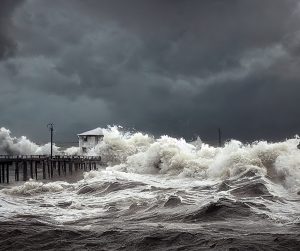Natural catastrophe inflicts $140bn loss on insurance industry in 2022
February 6, 2023508 views0 comments
By Onome Amuge
The insurance industry, already pressured by geopolitical tensions and rising inflation globally, plunged into an estimated $140 billion loss in 2022, impacted by natural catastrophes, according to reinsurance broker Gallagher Re.
The global reinsurance broking and advisory firm also cited other extreme weather events in 2022 including flooding in Pakistan, which affected millions and generated physical damage losses of almost $15 billion, while Australia, Nigeria and South Africa were also hit with heavy insurance losses following severe flooding.
 “A host of deadly weather events, many directly linked to climate change, took their toll on the globe last year, generating an estimated $360 billion in economic losses and a bill of $125 billion for private insurers. Public insurance entities covered losses of $15 billion.
“A host of deadly weather events, many directly linked to climate change, took their toll on the globe last year, generating an estimated $360 billion in economic losses and a bill of $125 billion for private insurers. Public insurance entities covered losses of $15 billion.
Read Also:
“Such substantial payouts, coupled with heavy losses arising from the war in Ukraine and supply chain disruption, have increased costs for both primary insurers and reinsurers, leading to reinsurance capacity shrinking at the January 1 renewals,” the report noted.
Gallagher Re observed that though insurers were largely able to secure the policy limits they wanted, it came at a price, as reinsurers sought to increase retention and restructure programmes to make sure they remained profitable.
The report also found that the availability of capacity has not only been problematic for property catastrophe cover, noting that other lines, particularly those affected by Russia’s war with Ukraine such as political violence and political risk, have also seen reinsurance capacity dwindle and rates increase.
It recalled that the effects of the war on the insurance sector were seen recently when protection and indemnity clubs withdrew fixed premium cover for war risk exposure in Russia and Ukraine, after failing to secure sufficient reinsurance capacity.
Gallagher Re added that inflation and supply chain disruption have also served to increase the costs overall, adding that an increased cost of capital drove, described as one of the hardest contract renewal cycles, resulted in expensive and high-volume claims payouts, with policyholders also facing revised prices.
Sharing a similar sentiment in its annual January market report, Indonesia based insurance broker, Howden Broking Group, noted that geopolitical and macroeconomic shocks combined with Hurricane Ian which occurred in 2022, have injected “significant volatility into the market.”
David Flandro, head of analytics at Howden, remarked that the reinsurance sector is experiencing heightened loss activity and war risk just as the global economy exits the ‘great moderation’ of interest rates and asset price volatility, leading to higher rates, decreased capacity and more stringent terms and conditions.
Despite the gloomy results, Gallagher Re said there is consensus that more capital will flow into the market in 2023 and beyond.
“Even in the dying embers of 2022, companies were able to bring new capital to the property reinsurance market, and others were able to successfully complete equity raises,” it said.
The report also highlighted the need to mitigate risks posed by climate change, as it noted that 2022 marks the fifth year since 2017 that natural catastrophe losses have exceeded $100 billion for insurers.
Steve Bowen, Gallagher Re’s chief science officer, remarked that the increase in the financial cost of natural hazards, means that much more opportunity exists to help people prepare before and after a disaster occurs.
According to Bowen, the fingerprints of climate change were visible on virtually every major weather and climate event in 2022, once again highlighting the urgency to implement proper planning and investment strategies that will limit the risk to life and property.
